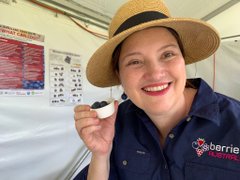Help shape the future of the National Bee Pest Surveillance Program (NBPSP)
Date: 10th April 2025
Plant Health Australia (PHA) is seeking your feedback via a survey to progress planning for the future of the National Bee Pest Surveillance Program (NBPSP)
This survey builds on PHA’s 2024 consultation with stakeholders, and is designed to measure the level of understanding amongst pollination providers and pollination-reliant industries of the objectives and activities of the National Bee Pest Surveillance Program.
PHA will use the outcomes of this survey to inform the development of a proposed 5-year program to ensure pollination providers and pollination-reliant industries have a strong understanding of the program, how it is adapting for Varroa destructor, to propose a funding model and to ensure the Program remains fit for purpose.
A report will be developed from the survey’s findings for further consultation with stakeholders at workshops planned for May 2025.
Please open the link to the survey: https://www.surveylegend.com/s/5yi3.
It has 14 questions, will take about 25 minutes to complete and needs to be completed by 12 noon, 22 April 2025
This will give PHA time to prepare the draft report and circulate it before workshops which are planned to take place in May 2025.
Please email beebiosecurity@phau.com.au if you have any questions about completing the survey
Background information to the survey
Since 2012, PHA has coordinated the National Bee Pest Surveillance Program, an early warning system that uses a range of surveillance methods at high-risk port locations throughout Australia. This program has been funded through Hort Innovation using the research and development levies of 14 horticultural industries and contributions from the Australian Honey Bee Industry Levies, Grain Producers Australia, the Australian Government through matched funding, and is delivered by State and Territory governments.
Last year, PHA consulted with stakeholders on the future of the honey bee surveillance program. Stakeholders were strongly supportive of continued bee pest surveillance, identifying that maintaining and improving hive health is of particular importance since the establishment, at that time, of Varroa destructor in New South Wales.




